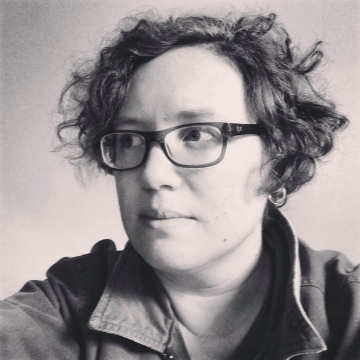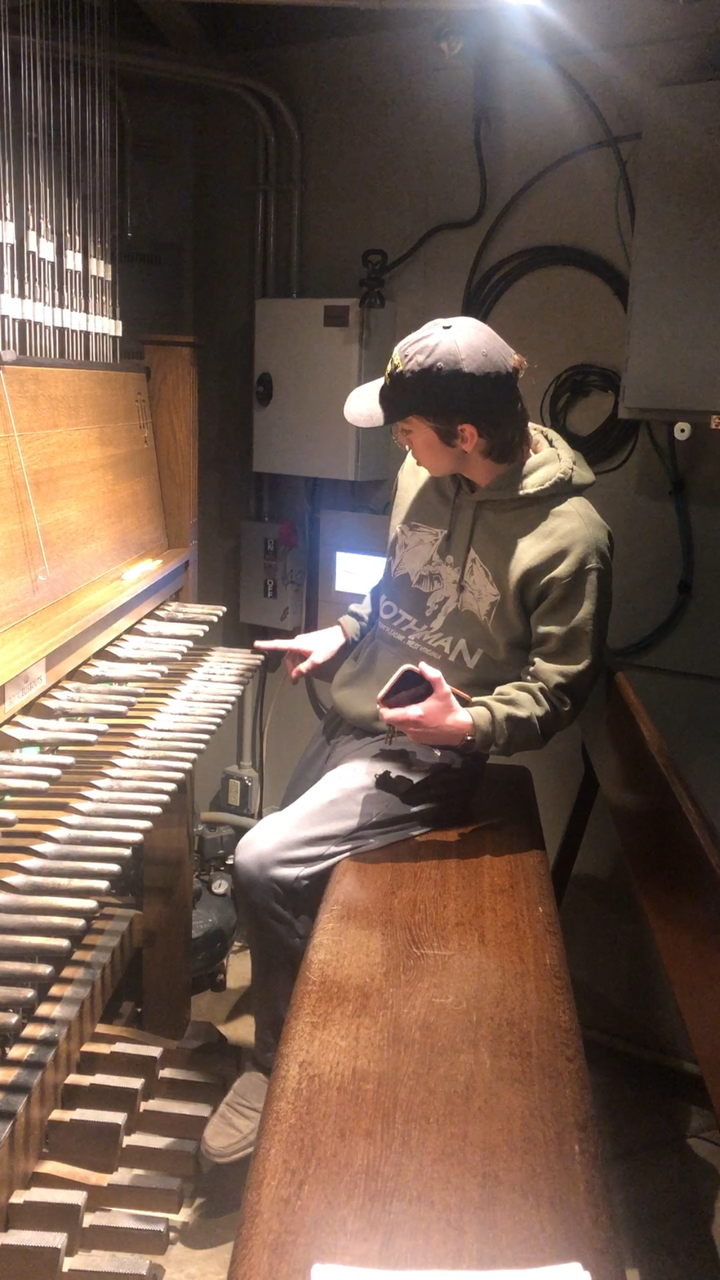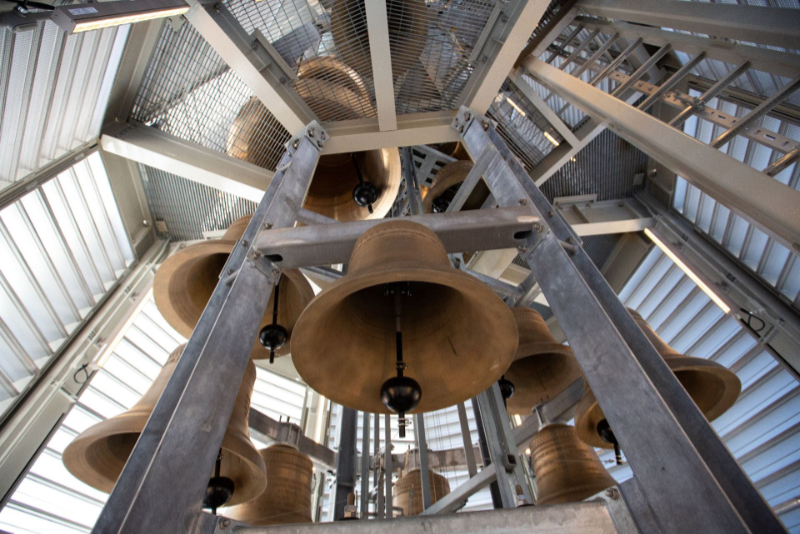October 7, 2022
Arthur R. Metz Bicentennial Grand Carillon, Indiana University-Bloomington
Bloomington, Indaiana – USA
Wade FitzGerald, carilloneur; Elijah Buerk & Casey Street, assisting carilloneurs.
Various repertoire in three sets
Olivia Kieffer | 19 OCT 2022
Ninety minutes of ringing carillon bells closed out World Space Week in Bloomington, Indiana, this year, and the planets were on display for those near the action.
Wade FitzGerald, Associate Instructor of Carillon at the Jacobs School of Music at Indiana University, performed a concert that filled the night air while passers-by looked through telescopes to see Jupiter, Saturn, and our own Moon. His students Elijah Buerk and Casey Street joined FitzGerald on several pieces.
The Arthur R. Metz Bicentennial Grand Carillon was built on the IU campus in 2020. There are only 600 such bell towers worldwide, and only 30 have the 61 bells that makes it a Grand Carillon.
For those unfamiliar with the carillon, just imagine church bells, but amp it up to 11!
Fitzgerald describes carillon as “a keyboard instrument like a piano or an organ, but the difference is how it makes sound. Piano does it through strings, organ does it through pipes, and carillon does it through bells. They’re big cast bells, and they don’t swing; they’re fixed in place and free to hang. If all the bells were swinging at once, it could knock the tower down.”
The keys — or batons, as they’re called on this instrument — are wooden posts played with the fists. There’s a second manual of keys for the lower notes, played with the feet, similar to an organ. Attached to each baton is a cable that runs to the top of the tower, where it connects to a clapper inside one of the bells. The clapper sits very close to the inside of the bell. When the baton is pressed, it tugs the cable, which pulls the clapper against the inside of the bell, making it ring.
The smallest of the bells in Metz is only the diameter of an appetizer plate, and the largest bell weighs over 12,000 pounds.
When I arrived at the concert, people were milling about the bell tower while Astronomy students set up two telescopes. The opening set, Carillon Works for the Night Sky, were all original compositions for carillon. The music started with Ronald Barnes’ Sonnerie from Serenade No. 2 (1979). It was a beautiful, perfect opener, reminiscent of “Carol of the Bells,” and a captivating introduction to carillon. The next piece was Johan Franco’s Lake Wales Nocturne (1956), which showcased the entire range of the instrument, and the set closed with Asteroids (1991) by Gary White.
The second set, Pop, Jazz, and More, were all arrangements by FitzGerald, starting with “Stardust” by Hoagy Carmichael and ending with “Space Oddity” by David Bowie.
Doctoral student in Organ Shayla Van Hal was at the concert, and she introduced me to Jeffrey Smith, a new professor in the Sacred Music program. Smith said, “You’re in good company here. We have astronomers, carillonneurs, and us. The view of Jupiter is not to be missed tonight.” Van Hal and Smith, both organists and colleagues of FitzGerald, were also there to see the planets and enjoy the fresh evening October air.
An encore of the second set was a duet of “Venus” from Holst’s The Planets, performed by FitzGerald and Elijah Buerk, arranged by Buerk. That’s when I got to see Jupiter, a perfect white circle surrounded by haze and white dots. Sarah Popp, a PhD student in the Astronomy department, explained that the tiny dots around the planet were Jupiter’s brightest moons. “They’re called the Galilean moons because Galileo observed them,” she told me. When I asked her what brought her out to the concert, she said, “We do a lot of outreach in our department. It’s really important for us to bring astronomy to the community, and so this collaboration with the music department is one of our outreach events this semester. We’ve been organizing this with [Wade FitzGerald] to do a Night Sky-themed recital and have the telescopes out here so that people can look at the sky.”
The third set, Two Lullabies, contained an arrangement of Franz Xaver Gruber’s “Silent Night,” performed and arranged by Casey Street, and “Lullaby” from Jean Miller’s (1916-1964) Three Short Pieces (1959).
At the beginning of the third set, From TV & Film, I saw the Moon up close through the telescope. FitzGerald played the entire set, opening with Richard Giszczak’s arrangement of “Moon River” by Henry Mancini. The Moon was purple-red and yellow, like Coruscant from Star Wars, but with craters. The audience increased throughout the evening, and the line for the telescopes grew long. During the Theme from Star Trek: The Next Generation (arranged by FitzGerald), I got to see Saturn: a small white circle with a perfect disc around it.
The concert closed with John Corter’s Variations on “Twinkle Twinkle Little Star.”
Afterward, several audience members followed Street up into the center of the bell tower. Street showed us how the bell tower can be programmed to ring at certain times. In the past, a carillonneur had to laboriously set the pins onto a giant rotating drum to create a melody (think a giant music box). In modern towers like the Metz, a performer can record a tune for future programming by simply playing the carillon, using the two octaves of the instrument that are attached to pistons for the recording system. Last spring, the tower was programmed to play the Ukrainian national anthem.
FitzGerald came up to the bell tower to visit with the audience and answer questions.
Metz has Dutch bells. FitzGerald explained: “There are generally two different camps of carillon bells; Dutch bells and English bells. Dutch bells tend to be very bright, and they have a very pure, clean sound, particularly in the high range, and they linger a long time in the high range. For the middle and low range, I prefer English bells; the sound is very big, very rich, and warm. The weak spot of the English bells is once you get up to the high range, they start to sound clunky, like flowerpots.”
As more audience members came up the tower into the tiny room, FitzGerald performed a raucous encore for everyone: “Hell’s Bells” by AC/DC (his own arrangement). As FitzGerald continued talking with the audience and played a few more tunes, Shayla and I went down the stairs to chat with Casey Street.
Street, a fourth-year percussion major, said he’s been taking carillon lessons for several years at IU. He said there are weekly lessons, and “there’s a studio class with all the other students, and then we put on shows like this as much as possible.”
Up ahead is a carillon Halloween recital with costumes, which Street says is his favorite yearly concert. It can be heard on Saturday, October 29th, at noon, at the Arthur R. Metz Bicentennial Grand Carillon Tower.
I plan to attend as many of their concerts as I can. With excellent musical programming, inventive themes, and the beauty of the bell tower, the carillon studio at Indiana University has gained a new fan. ■
EXTERNAL LINKS:
- Arthur R. Metz Bicentennial Grand Carillon: 200.iu.edu/signature-projects/heritage-art-campus/heritage-preservation1/grand-carillon.html
- Jacobs School of Music, Indiana University Bloomington: music.indiana.edu

Olivia Kieffer is a composer, percussionist, and educator. A native of Wisconsin, her compositions have been described as “immediately attractive,” “like a knife of light” and “honest, to the point, and joyful!”









.png)